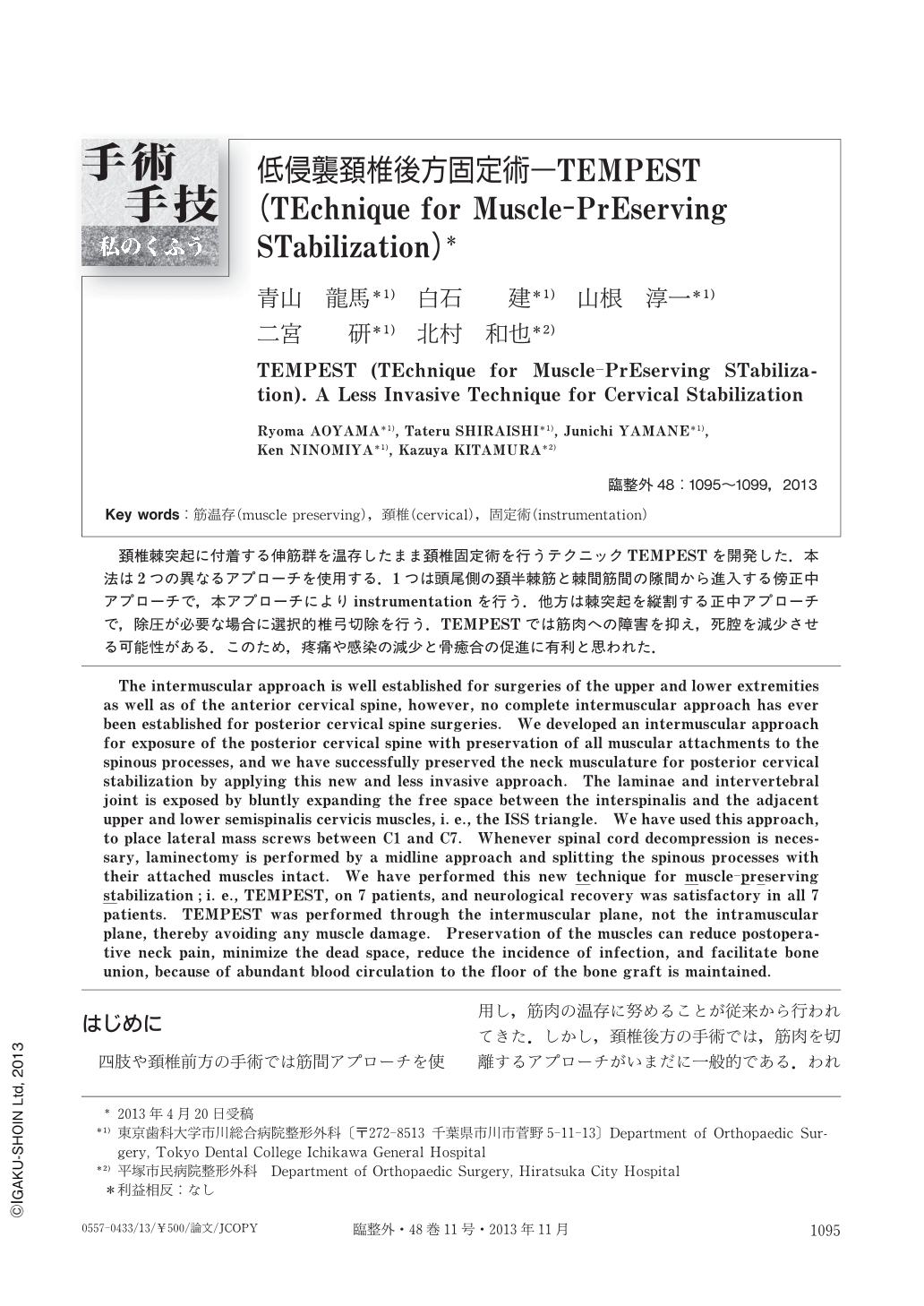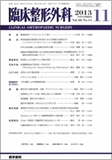Japanese
English
- 有料閲覧
- Abstract 文献概要
- 1ページ目 Look Inside
- 参考文献 Reference
頚椎棘突起に付着する伸筋群を温存したまま頚椎固定術を行うテクニックTEMPESTを開発した.本法は2つの異なるアプローチを使用する.1つは頭尾側の頚半棘筋と棘間筋間のすき間から進入する傍正中アプローチで,本アプローチによりinstrumentationを行う.他方は棘突起を縦割する正中アプローチで,除圧が必要な場合に選択的椎弓切除を行う.TEMPESTでは筋肉への障害を抑え,死腔を減少させる可能性がある.このため,疼痛や感染の減少と骨癒合の促進に有利と思われた.
The intermuscular approach is well established for surgeries of the upper and lower extremities as well as of the anterior cervical spine, however, no complete intermuscular approach has ever been established for posterior cervical spine surgeries. We developed an intermuscular approach for exposure of the posterior cervical spine with preservation of all muscular attachments to the spinous processes, and we have successfully preserved the neck musculature for posterior cervical stabilization by applying this new and less invasive approach. The laminae and intervertebral joint is exposed by bluntly expanding the free space between the interspinalis and the adjacent upper and lower semispinalis cervicis muscles, i. e., the ISS triangle. We have used this approach, to place lateral mass screws between C1 and C7. Whenever spinal cord decompression is necessary, laminectomy is performed by a midline approach and splitting the spinous processes with their attached muscles intact. We have performed this new technique for muscle-preserving stabilization;i. e., TEMPEST, on 7 patients, and neurological recovery was satisfactory in all 7 patients. TEMPEST was performed through the intermuscular plane, not the intramuscular plane, thereby avoiding any muscle damage. Preservation of the muscles can reduce postoperative neck pain, minimize the dead space, reduce the incidence of infection, and facilitate bone union, because of abundant blood circulation to the floor of the bone graft is maintained.

Copyright © 2013, Igaku-Shoin Ltd. All rights reserved.


